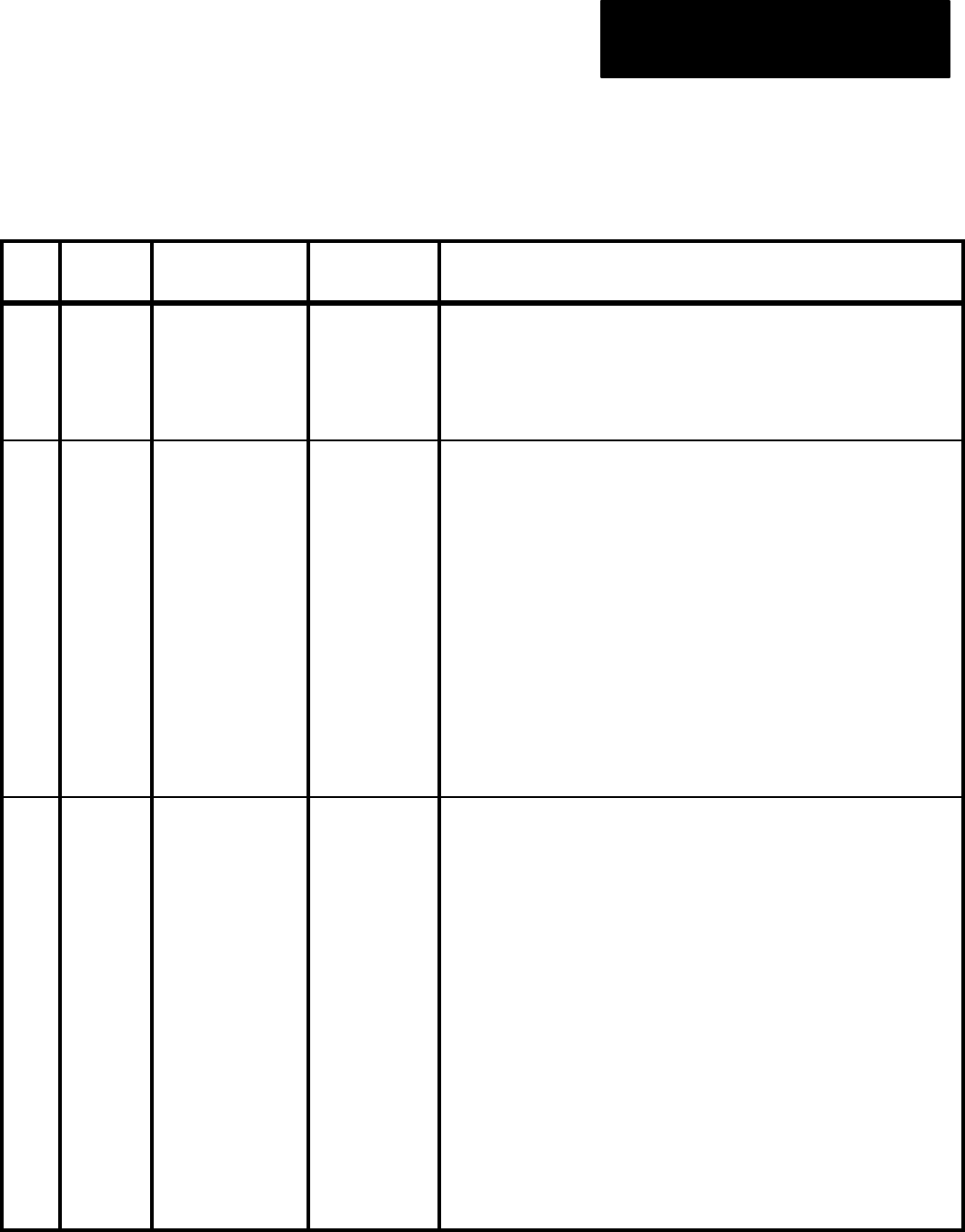Owner manual
Table Of Contents
- 5370-ND016, Bulletin 5370 Color CVIM Module MATH-PAK Option User's Manual
- Important User Information
- Table of Contents
- 1 - Using This Manual
- 2 - Introduction to the MATH-PAK Option
- 3 - Installation
- 4 - Defining Formulas
- 5 - Analysis Functions and Runtime Displays
- A - Color CVIM Communications with MATH-PAK Installed
- Index
- Back Cover

Chapter 4
Defining Formulas
4–15
Table 4.C (part 2 of 3)
Operand Definitions
Key
Operand
Type
*Operand Symbol *Sub-code (s) Type of Data Returned to Formula
RL Ref. Line
REFLn.s
(n = 1 to 3)
(s = 0 to 3)
.0
.1
.2
.3
.4
X coordinate value of edge position on reference line.
Y coordinate value of edge position on reference line.
Pass/fail condition for reference line (1 = pass, 0 = fail).
Theta from a reference line configured for “X–X then Y” or
“Y–Y then X” rotation compensation.
Number of faults detected.
RW Ref.
Window
REFWn.s
(n = 1 to 3)
(s = 0 to 16)
.0
.1
.2
.3
.4
.5
.6
.7
.8
.9
.10
.11
.12
.13
.14
.15
.16
Cumulative position: X coordinate value.
Cumulative position: Y coordinate value.
Cumulative angle (θ).
Cumulative pass/fail condition (1 = pass, 0 = fail).
Active feature #1 position: X coordinate value.
Active feature #1 position: Y coordinate value.
Active feature #1 score value.
Active feature #1 pass/fail condition (1 = pass, 0 = fail).
Active feature #2 position: X coordinate value.
Active feature #2 position: Y coordinate value.
Active feature #2 score value.
Active feature #2 pass/fail condition (1 = pass, 0 = fail).
Active feature #3 position: X coordinate value.
Active feature #3 position: Y coordinate value.
Active feature #3 score value.
Active feature #3 pass/fail condition (1 = pass, 0 = fail).
Number of faults detected.
LP Light
Probe
LPRB.s
(s = 0 to 20)
.0
.1
.2
.3
.4
.5
.6
.7
.8
.9
.10
.11
.12
.13
.14
.15
.16
.17
.18
.19
.20
Light probe brightness value for red channel.
Light probe brightness value for green channel.
Light probe brightness value for blue channel.
Pass/fail condition for warning range (1 = pass, 0 = fail).
Pass/fail condition for fault range (1 = pass, 0 = fail).
Number of faults detected.
Nominal value for red channel.
Fault range high for red channel.
Fault range low for red channel.
Warning range high for red channel.
Warning range low for red channel.
Nominal value for green channel.
Fault range high for green channel.
Fault range low for green channel.
Warning range high for green channel.
Warning range low for green channel.
Nominal value for blue channel.
Fault range high for blue channel.
Fault range low for blue channel.
Warning range high for blue channel.
Warning range low for blue channel.
*The letter n = tool or formula number (as appropriate). The letter s = operand sub-code.










